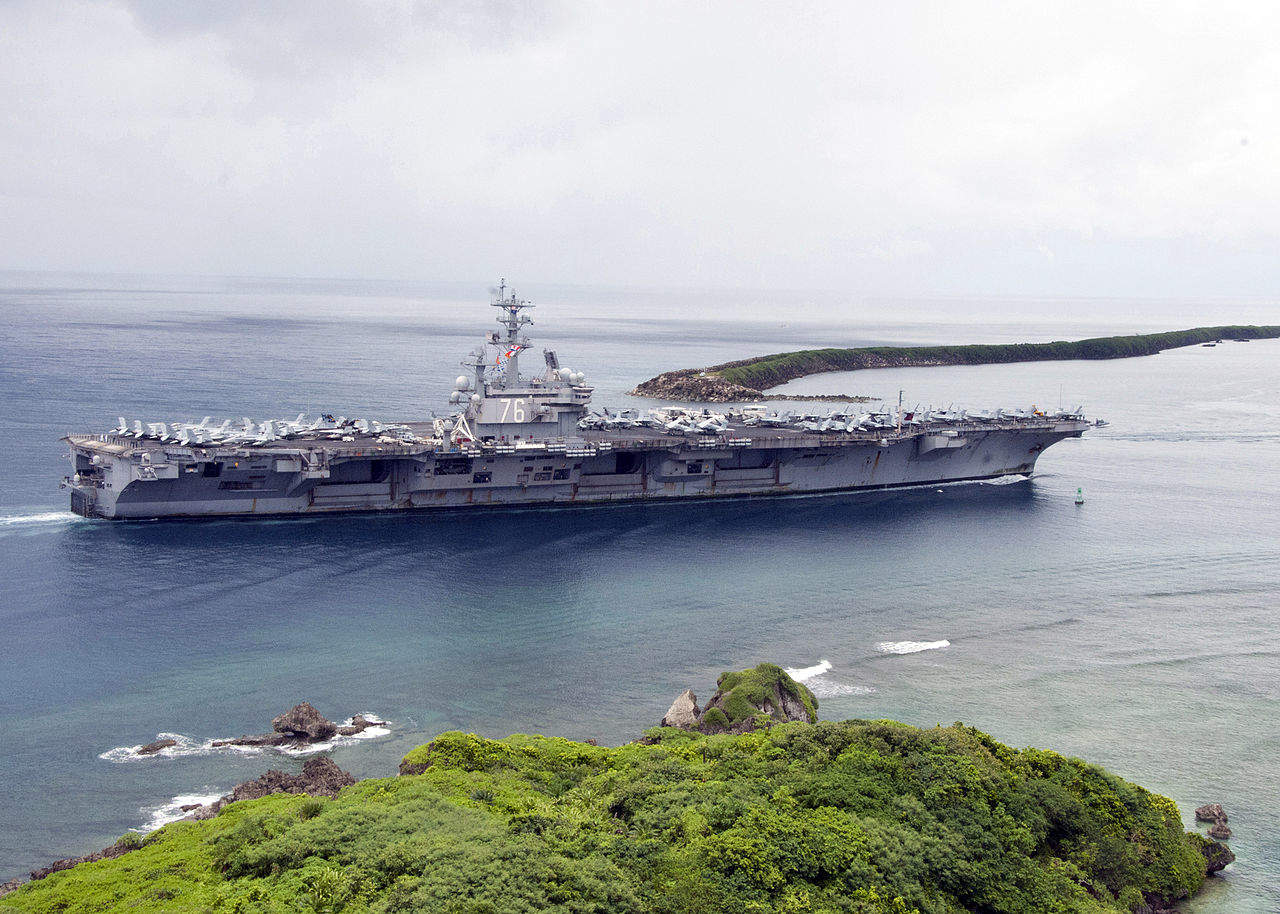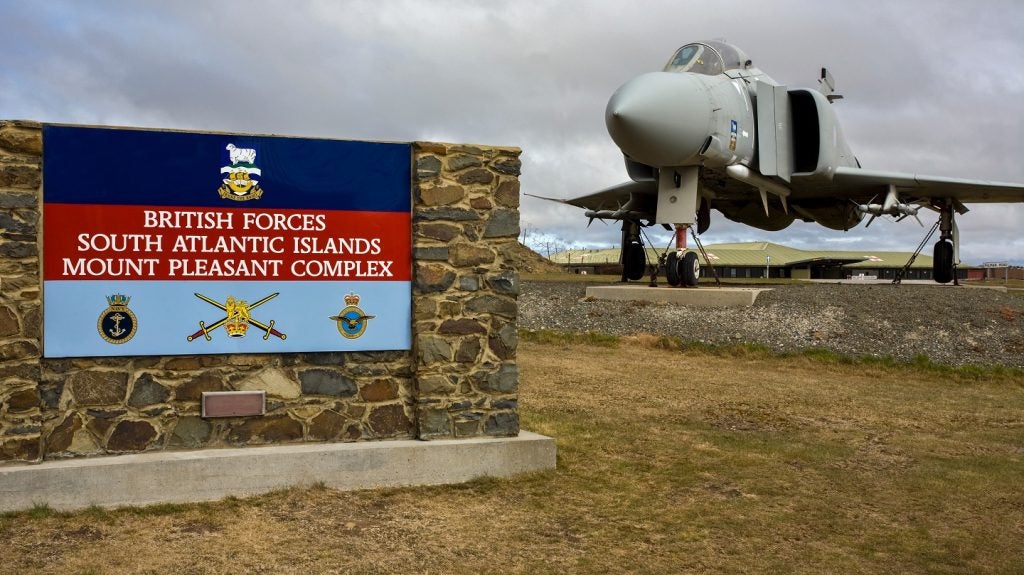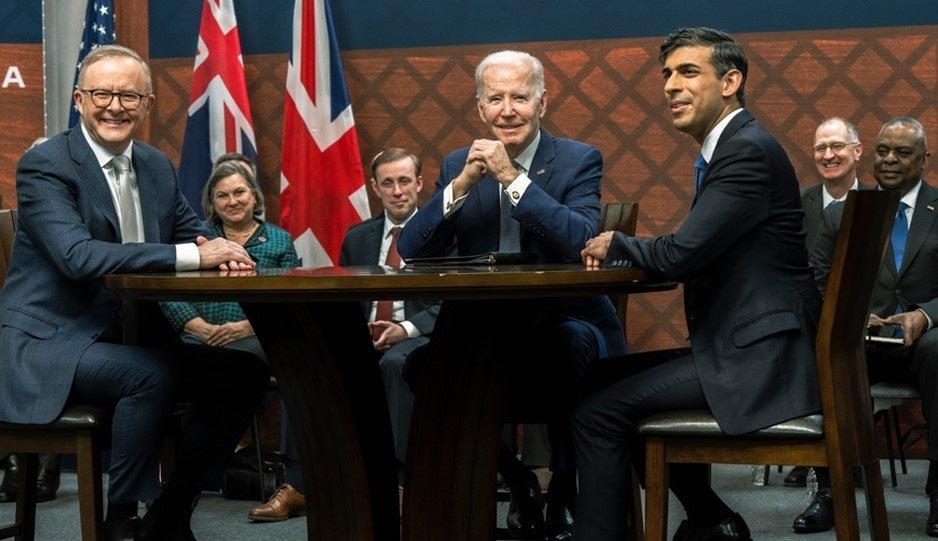
When President Trump told the people of Guam that his administration was “with you a thousand percent,” leaving aside the mathematical impossibility of that promise, he was reaffirming more than a century’s commitment to arguably the most far-flung 210 square miles of American soil in the world.
Sitting roughly 3,300 miles from Hawaii, towards the western edge of the Pacific, Guam was gained from the Spanish in 1898, and has been in US hands ever since, apart from some thirty months of Japanese occupation that began in the immediate aftermath of the attack on Pearl Harbor. Once recaptured in 1944, the island quickly established its worth as a hugely important strategic operating base, earning its nickname ‘the tip of the spear’ during WW2’s Pacific campaign, and later going on to play a major role in the Vietnam War.
Significant capability
Today, there are two major facilities on Guam – Andersen Air Force Base in the north, and Naval Base Guam in the south, which were combined to form Joint Base Marianas in 2009 – with the US military occupying around a third of the island. Andersen Air Force Base, with its two-mile long runways and huge munitions and fuel storage facilities, is home to the bombers that routinely rotate to the island from the mainland US, as well as hosting a navy helicopter squadron.
The naval base is home port to four nuclear-powered fast attack submarines – vital assets in the US intelligence gathering operation in the region – support vessels and a number of Pacific Command, Pacific Fleet, Seventh Fleet and Naval Seabee units. There are also plans afoot which could see the current strength of 7,000 personnel bolstered with the relocation of 5,000 US Marines from Okinawa to Guam.
It all adds up to a significant capability, in a strategically important location – but one that is nearly three times closer to Pyongyang than it is to the US mainland, and that has never sat comfortably with the North Korean regime. There has been talk of attacking Guam before, but until now it has always seemed a hollow threat; Kim Jong Un’s ramped-up and revitalised missile programme has changed all of that.
The escalating bellicose rhetoric in August that had the North Korean leader boasting of plans to attack Guam, and President Trump warning of “fire and fury like the world has never seen” saw the tension in this already ever-tense region racked up to new highs and America’s forward operating base thrust into the geo-political spotlight. Over a month on from these angry exchanges, Trump’s maiden speech to the UN spoke of being prepared “to totally destroy North Korea” if the need arose; it seems Guam’s moment on the world stage is shaping up to be anything but short-lived.
How well do you really know your competitors?
Access the most comprehensive Company Profiles on the market, powered by GlobalData. Save hours of research. Gain competitive edge.

Thank you!
Your download email will arrive shortly
Not ready to buy yet? Download a free sample
We are confident about the unique quality of our Company Profiles. However, we want you to make the most beneficial decision for your business, so we offer a free sample that you can download by submitting the below form
By GlobalDataTaking the bait
“Wild rants from North Korea are nothing new,” says Defense Watch regional analyst Philip Ramirez. “The Kim dynasty has always taken its opportunities to goad the USA, and for the most part it gets ignored. What makes this time different is Trump.”
Unlike previous incumbents of the White House, Ramirez says President Trump has “taken the bait” and responded in kind. From the North Korean perspective, this was unexpected and after so many years of railing unchallenged against the ‘evil US enemy’, he thinks it may have taken Pyongyang somewhat by surprise and presented Kim Jong-Un with little face-saving option other than to up the ante. For the moment at least, it seems to have left the two leaders stuck in the rhetorical equivalent of a revolving door, opened up rifts in global politics and given President Putin a golden opportunity to grandstand Russia as a diplomatic deal-broker on the world stage.
It has also fixed Guam firmly in the cross-hairs – but why is this island such an important piece in the ongoing chess game between Washington and Pyongyang?
Permanent aircraft carrier
Carl Schuster, the former director of operations at the US Pacific Command’s Joint Intelligence Center, described it in an interview for CNN as “the next best location in the Pacific” after Japan and South Korea – and it comes with one significant advantage over either. It has often been dubbed a ‘permanent aircraft carrier’ in the region: just like a real US Navy vessel, American sovereignty applies, and the White House can launch strikes from Guam at will, without having to seek agreement from any host country before acting.
There is considerable value too in the island’s wider potential for softer power projection and propaganda purposes. The US B-1 bombers that flew over South Korean in a show of solidarity after a previous missile test in June took off from Andersen Air Force Base. It made the point, but while such actions understandably do not play well in Pyongyang, just how real is the threat to Guam?
The North Korean regime has demonstrably been pressing ahead with its missile programme since Kim Jong Un came to power in 2011, totting up some 85 launches to date. He has fired off more in 2017 alone than his father did in his entire time as leader, those missiles have been better and travelled further, and there have been nuclear tests, too. The recent launches of two missiles over Japan have also dispelled any lingering doubts about range; at around 2,300 miles, the latest flight was Pyongyang’s longest-ever, and puts Guam well within reach.
That said, things may not be just as bleak as they might first appear for this little piece of America. As Ramirez points out, having the distance is one thing, being able to hit a target that is scarcely 30 miles long and just 12 miles across at its widest, from over 2,000 miles away, is quite another.
A question of guidance
“Guidance has always been a weakness,” Ramirez says. “They rely mostly on old – really old – Soviet-era guidance technology and that is a problem. The new missiles have the legs for the job, but nothing like the reliable accuracy.”
While there have been unconfirmed rumours that Pyongyang may be moving towards satellite guidance, possibly based around the Chinese BeiDou sat-nav system, for the moment at least, it seems that North Korean missiles may be simply too inaccurate to guarantee a certain hit.
“It’s popular to portray Kim as some kind of delusional maniac. President Trump, for instance, called him ‘Rocket Man’ at the UN, but the truth is, he’s a wily operator,” says Ramirez. “He’s not going to want to be put in a situation where he’ll risk losing face, so now those ‘operational plans’ to attack Guam with ballistic missiles have kind of morphed into dropping missiles into the sea around Guam, and you don’t need much accuracy for that.”
Moreover, an effective array of interceptors await. As Guam’s Homeland Security Advisor, George Charfauros, has said, “there are several layers of ballistic missile defence,” including the Terminal High Altitude Area Defense (THAAD) system set up on the island two years ago, and the Aegis-equipped warships routinely deployed in nearby waters. It seems North Korea will find actually hitting Guam no easy task.
Trouble ahead?
If Kim Jong Un’s missiles themselves are not quite as much of a threat as they may initially have seemed, the brinksmanship they have emboldened him to adopt, coupled with the rise of a twitter-happy US President, could still make for trouble ahead.
“The danger is that trading threats actually leads the North Koreans to believe that the US is going to do something that it isn’t, and nobody knows what Kim might do then,” Ramirez says. “Both sides really need to dial it back.”







